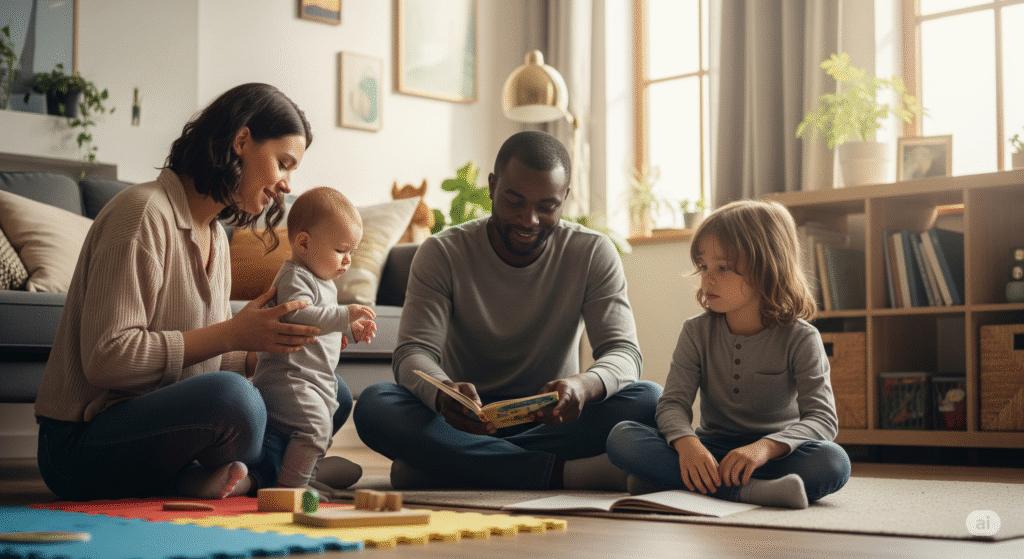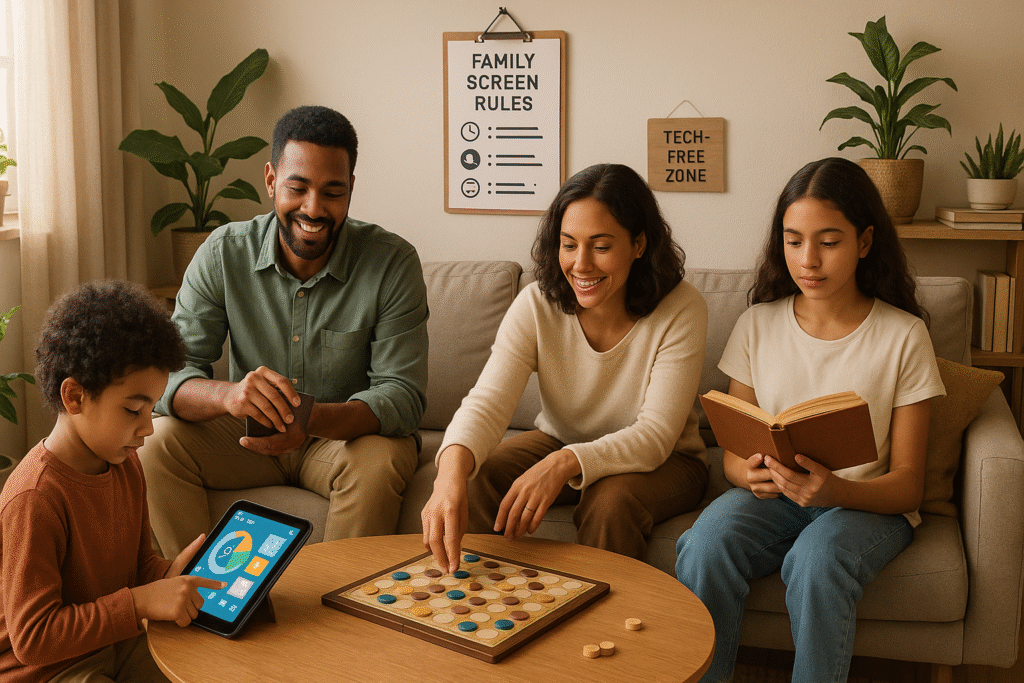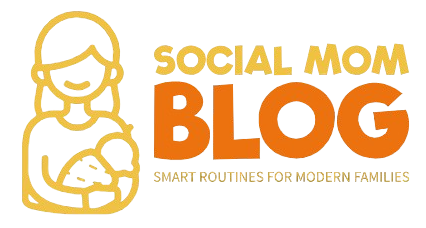Modern Parenting 101: 9 Secrets for Happier Kids
Life as a parent today feels like a whole new ballgame, right? Gone are the days when a simple “because I said so” cut it. Now, we’re juggling screen time, emotional intelligence, and trying to raise kids who are not just obedient, but truly happy, resilient, and ready for a fast-changing world. It’s a lot to take on, and if you’re feeling a bit overwhelmed, you’re definitely not alone.
Modern parenting isn’t about being perfect; it’s about being present, informed, and intentional. It’s about building a strong connection with your kids while also giving them the tools they need to thrive. This guide is your roadmap to understanding and applying modern parenting strategies that actually work.
We’ll dive deep into different modern parenting styles, share positive parenting techniques, and give you the best parenting advice for new parents (and seasoned ones!) to create a harmonious, joyful family life. If you’re just starting your journey, our guide to newborn baby care fundamentals is a great place to begin. Get ready to transform your approach and truly connect with your child.
The Evolution of Modern Parenting

Remember how your parents or grandparents raised kids? It was probably very different from how you’re thinking about it today. For generations, parenting often leaned heavily on strict rules and quick fixes for behavior. But things have changed, big time.
oday, we know so much more about child development, brain science, and the long-term effects of different ways we talk to and treat our kids. Understanding concepts like holistic infant development has shifted our focus. The digital world has also flipped things upside down, adding new challenges and opportunities.
Modern parenting aims to raise kids who are:
- Emotionally smart and can handle big feelings.
- Good at solving problems and thinking for themselves.
- Kind, empathetic, and respectful.
- Connected to their parents, feeling safe and loved. A key part of this is ensuring their environment is secure through proper home safety and proofing for families.
It’s about moving away from just controlling behavior and focusing more on guiding, teaching, and building a strong, lasting relationship. It’s less about power struggles and more about teamwork.
Understanding Parenting Styles: What Are They and Why Do They Matter
When we talk about how parents raise their kids, we often use the term “parenting styles.” These aren’t strict boxes you fit into, but rather general approaches that show how parents try to teach, guide, and connect with their children. Knowing these styles can help you see your own habits more clearly and decide what works best for your family.
You’ve probably heard of the “Four Classic Styles” from psychologist Diana Baumrind:
Think warm, firm, and fair. These parents set clear rules and expectations, but they also explain why the rules exist and listen to their child’s feelings. They encourage independence while providing ample support.
This is the “my way or the highway” style. Rules are strict, punishments are common, and there’s not much room for discussion or a child’s opinion.
These parents are very loving and responsive, but they rarely set limits or enforce rules. Kids might have a lot of freedom, but they can also struggle with self-control.
Parents in this category are often disengaged. They provide basic needs but offer little emotional support, guidance, or supervision.
Beyond these classics, new ideas have popped up, like Conscious Parenting, Attachment Parenting, and Respectful Parenting. These often overlap, focusing on empathy, connection, and treating children with dignity.
So, why do these styles matter?
Simply put, the way you parent deeply affects your child’s confidence, social skills, and how they handle emotions as they grow up. Research, like that from the AAP (American Academy of Pediatrics), consistently shows that an authoritative approach often leads to kids who are happier, more independent, and better adjusted. Your approach can even influence major life decisions, such as figuring out how to start homeschooling and eventually how to choose the best homeschool curriculum for your family.
Want to figure out your primary approach?
🎯 Take our Parenting Style Quiz!
Positive Parenting Techniques That Work in Real Life
Many parents want to shift away from old-school discipline and embrace positive parenting techniques. This approach isn’t about being “soft” or letting kids get away with everything. Instead, it’s about teaching kids valuable life lessons through respect, understanding, and clear communication, rather than relying on fear or punishment. his could even include complex topics like learning how to raise a financially responsible child. It’s how you really how to be a better parent.
Here are some techniques that truly make a difference:
- Validating Emotions: When your child is upset, instead of saying “don’t cry,” try “I see you’re feeling really frustrated right now. It’s okay to feel that.” This teaches them that all feelings are okay and helps them learn to manage those feelings.
- Positive Reinforcement: Catch your child doing something good! A simple “I really appreciate how you helped your brother with that toy” goes a long way. This makes them want to repeat good behaviors.
- Calm Discipline: When a rule is broken, focus on the lesson, not just the punishment. For example, instead of yelling, try, “When you hit, it hurts others. How can we make this right?” This is a core idea in the Positive Discipline framework.
- Encouraging Independence & Cooperation: Give your kids chances to help out and make choices (when appropriate). “Do you want to wear the blue shirt or the green shirt?” empowers them and builds their sense of responsibility.
- Use Natural Consequences: If your child leaves their bike outside and it gets wet, the natural consequence is a wet seat. This teaches them about cause and effect in a safe way, without you having to be the “bad guy.”
The goal is to build an inner discipline in your child, where they choose to do the right thing because they understand why it matters, not just because they’re afraid of getting in trouble.
Ready to try new strategies?
🎯 Download our Positive Parenting Toolkit!
Gentle & Responsive Parenting: A Relationship-Based Approach

You might hear a lot about gentle parenting tips and responsive parenting definition these days. These approaches are gaining popularity because they focus on building a strong, respectful relationship with your child, seeing them as a whole person, not just a little human to control.
So, what exactly does it mean to be responsive and gentle?
- Being Responsive: It’s about truly seeing and hearing your child. When they cry, you respond. When they’re excited, you share their joy. This isn’t just about meeting their physical needs; it’s about being tuned into their emotional cues and meeting those needs too, which is critical for healthy toddler behavior and emotional growth. It builds a secure attachment, like the one highlighted in the Circle of Security model, making your child feel safe and valued.
- Gentle Discipline vs. Permissiveness: This is where many get confused. Gentle parenting is NOT permissive parenting. You still set firm limits and have expectations. The difference is how you enforce them. Instead of yelling or time-outs that shame, gentle discipline uses calm, logical consequences, teaches skills, and focuses on repair. For instance, if your child draws on the wall, a gentle approach might be: “Walls are not for drawing. Let’s get a wet cloth and clean this together, and then we can find paper for your art.”
- How to Set Limits Respectfully: This means communicating boundaries clearly, explaining the why behind them, and staying calm even when your child pushes back. It’s about saying “no” to a behavior while still saying “yes” to your child’s feelings. It acknowledges their desire but holds the line on what’s safe or acceptable.
This approach, championed by authors like Janet Lansbury and Dr. Laura Markham, helps kids develop self-control because they feel respected and understood, not just controlled from the outside.
Common Challenges and Real-World Solutions
Let’s be real: no matter how many books you read or how many modern parenting solutions you try, kids are kids. There will be tantrums, sibling squabbles, and days you just want to pull your hair out. It’s totally normal. The key is having a few parenting hacks for busy moms (and dads!) up your sleeve for when things get tough, including clever toy storage ideas for small spaces to keep the chaos at bay.
- Handling Tantrums: When a tantrum hits, remember your child is having a hard time, not giving you a hard time. Stay calm. Acknowledge their big feelings (“You’re so mad that you can’t have another cookie!”). Offer comfort if they want it. Wait for the storm to pass, then discuss the situation when they’re calm.
- Sibling Rivalry: Instead of immediately jumping in to solve every fight, teach them problem-solving skills. “How can you two work this out?” or “What’s a fair way to share that toy?” Help them negotiate rather than always playing judge.
- Bedtime Struggles: Routines are your best friend here. A consistent, calm bedtime routine (bath, books, cuddles) signals to their body that it’s time to wind down. Just as a good homeschooling schedule can structure a day, a solid bedtime routine can calm the night. Limiting screens before bed also helps.
- When You Lose Your Cool: It happens to the best of us. The most powerful thing you can do is repair the relationship afterward. A simple, “Mommy yelled earlier, and I’m sorry. I was feeling overwhelmed, and it wasn’t fair to you. Next time, I’ll take a deep breath,” teaches your child about accountability and repair. This is a core idea from Dr. Becky Kennedy.
- Balancing Work and Parenting: This is a huge one for many families. It’s about setting realistic expectations for yourself, asking for help when you need it, and finding small moments to connect with your kids throughout the day. Even 15 minutes of focused, distraction-free play can make a huge difference.
Remember, every challenge is an opportunity to teach. It’s not about being perfect, but about consistently showing up and working through the tough stuff together.
Emotional Intelligence in Kids: How to Teach It Daily
One of the biggest goals of modern parenting is to raise emotionally intelligent kids. Why? Because kids who understand and can manage their emotions are happier, have better relationships, and do better in school and life. This goes hand-in-hand with building secure attachment.
Here’s how you can help your child grow their emotional smarts:
- Modeling Emotional Regulation: Your kids watch everything you do. When you’re frustrated, do you yell or do you take a deep breath? Show them how you calm yourself down. Talk about your own feelings in a healthy way. “Mommy is feeling a little frustrated right now because this computer isn’t working, so I’m going to take a break.”
- Teaching Empathy: Help them understand how others might feel. “Look, your friend is crying. How do you think she’s feeling? What could we do to help her?” Reading books about feelings and discussing characters’ emotions is also super helpful.
- Teaching Self-Awareness: Help them name their feelings. “It looks like you’re feeling really angry right now.” Once they can name it, they can start to understand it and then manage it.
- The Role of Secure Attachment: When your child feels truly safe, loved, and knows you’ll be there for them, they build a secure attachment. This frees up their brain to learn, explore, and manage their emotions because they aren’t constantly worried about whether you’ll meet their needs. This foundation of trust is everything.
Building emotional intelligence is a journey, not a destination. It’s about constant conversations, gentle guidance, and showing them that all feelings are welcome and manageable.
Parenting in the Digital Age: Screens, Social Media & Boundaries

If there’s one thing that defines modern parenting solutions in the 21st century, it’s navigating the digital world. Screens, tablets, social media – they’re everywhere, and figuring out how to handle them can feel like a minefield.
Here’s a common-sense approach to building a healthy tech-home culture:
- Tech Usage Rules: Don’t just hand over a tablet. Set clear family rules from the start. What hours are screen-free? Where can devices be used? Are there content limits? The AAP (American Academy of Pediatrics) offers great guidelines for different ages.
- Screen Time Guidance: It’s not just about how much time, but what kind of content. Is it educational? Creative? Or just passive scrolling? Encourage interactive, creative, and educational apps over mindless videos. And remember, face-to-face interaction is always best for young brains.
- Emotional Effects of Digital Overload: Too much screen time can affect mood, sleep, and even attention spans. Talk to your kids about how screens make them feel. Do they feel anxious after social media? Tired after too much gaming? Help them recognize these signals.
- Building a Healthy Tech-Home Culture: This means leading by example. Put your own phone away during family meals or playtime. Create “tech-free zones” in your home. Encourage other activities like reading, playing outside, or board games. It’s about balance, not banishment.
Remember, technology isn’t inherently bad, but like anything, it needs thoughtful management to benefit, not burden, your family.
The Parents’ Role in Self-Regulation and Growth
Being a modern parent isn’t just about what you do for your kids; it’s also about what you do for yourself. You can’t pour from an empty cup, and your own well-being deeply impacts your ability to parent effectively. Prioritizing your pregnancy and postpartum wellness is a foundational step in this journey.
- The Power of Repair and Modeling: We talked about repairing with your child after you mess up. This is huge. It teaches them humility, forgiveness, and that mistakes are growth opportunities. Modeling this behavior — apologizing, explaining your feelings, and trying again — is one of the most powerful lessons you can give them.
- Self-Care and Reflection: This isn’t selfish; it’s essential. Find small ways to recharge, whether it’s a quiet cup of coffee, a walk, or listening to a podcast. Take time to reflect on your parenting wins and challenges. What went well today? What could I do differently next time?
- Community, Therapy, and Support Resources: You don’t have to do this alone. Lean on your partner, friends, or family. Consider joining parenting support communities (like Parent Lab or Big Little Feelings) or seeking therapy if you’re feeling truly stuck or overwhelmed. Sometimes, an outside perspective can make all the difference. Remember, asking for help is a sign of strength, not weakness.
Investing in yourself is the best investment you can make in your family’s harmony.
Conclusion
Whew! We’ve covered a lot, from different modern parenting styles to tackling digital dilemmas and nurturing emotional intelligence. If you take one thing away from this guide, let it be this: you don’t have to be perfect. No one is. The goal of modern parenting isn’t about achieving some impossible ideal; it’s about showing up, learning, adapting, and striving to be present and connected with your kids.
Every day is a new chance to learn and grow, both for you and your children. Embrace the messy, beautiful journey of parenthood. Focus on progress, not perfection, and remember that your consistent love and presence are the most powerful tools you have.
FAQ
What is modern parenting?
Modern parenting is an approach that focuses on building a strong, respectful relationship with your child while teaching them emotional intelligence, critical thinking, and resilience. It emphasizes guidance, empathy, and understanding over strict punishment, adapting to today’s complex world.
Which parenting style is best for today’s families?
While no single style is “best” for everyone, the authoritative parenting style is widely supported by research (including from the AAP) as highly effective. It combines warmth and responsiveness with clear, consistent boundaries, fostering well-adjusted and confident children.
How can I be a more positive parent?
To be a more positive parent, focus on validating your child’s emotions, using positive reinforcement for good behavior, practicing calm discipline that teaches lessons, and encouraging independence. It’s about building them up rather than tearing them down.
What is gentle parenting and how does it work?
Gentle parenting is a relationship-based approach that prioritizes empathy, respect, and understanding. It involves setting clear limits calmly, offering choices, and focusing on teaching rather than punishing, always acknowledging the child’s feelings.
Is responsive parenting the same as attachment parenting?
Responsive parenting is a core component of attachment parenting, but they’re not exactly the same. Responsive parenting means consistently tuning into and meeting your child’s emotional and physical needs. Attachment parenting includes responsiveness but also often emphasizes practices like co-sleeping, babywearing, and extended breastfeeding to foster a strong emotional bond.
Resources:
- https://childandfamilyblog.com/neuroscience-parental-influence-shape-our-experiences/
- https://pmc.ncbi.nlm.nih.gov/articles/PMC10016201/
- https://www.healthychildren.org/English/family-life/family-dynamics/Pages/Parenting-Styles.aspx
- https://www.positivediscipline.com/
- https://www.ahaparenting.com/
- https://www.goodinside.com/
- https://www.healthychildren.org/English/media/Pages/default.aspx
- https://parentlab.com/
- https://biglittlefeelings.com/


2 Comments